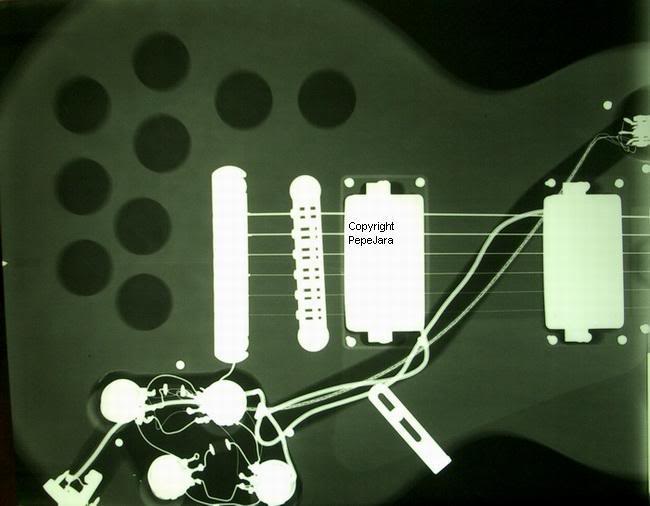I think the wood can make a pretty massive difference to weight, I've got a Custom 22 Soapbar that's 4.12kg (just over 9lb).
Perhaps some tapping aft of the bridge, in the centre, and listening for a change in tone closer to strap pin might work? Perhaps x-raying is the only way to be 100% sure...
It's nice for me to see your guys' replies. According to the wood weight issue, I have more info on that. In December 2005, when US Appeal Court allowed PRS to resume their Singlecut production, Musicradar.com interviewed Paul . In the conversation he said he would not drill the Singlecut body in order to loose weight but to use 'lightweight mahogany' instead. Here are references;
"Yeah, we play with that [the weight] on an ongoing basis. We've come up with lighter mahogany for the backs. Some other people drill holes in the bodies before they put the maple tops on to reduce weight. We don't do that."
Read all the context of this interesting interview here;
http://www.musicradar.com/gear/guitars/electric/6-string-solid-body/singlecut-19673
If you guys already read the review of Singlecut Satin that I previously posted, it's funny how could Paul came up with drilled-body Singlecut implementation just one year after he said 'NO' to it.
After learning from other major weight-relief players like Gibson LP, I roughly conclude that weight relief might not degrade the tonal characteristics (for LP context) so the production of weight relieved guitars is not a shame. Don't get me wrong, I just feel strange about the conflict between what Paul said and what exactly produced. I'm still a PRS lover.
The existing of drilled-body Singlecuts implies that for a period (guess it's around 2006-2007), PRS lacked lightweight mahogany stock.
Like I said, I love PRS. But sometimes when I visit gibson.com, especially Les Paul Standard page, I cannot reject that I think prsguitars.com needs a real big improvement. More detailed information should be provided, not just 'mahogany body bla bla bla' at least customers should have the chance to know the fact of the construction of the guitar they are going to buy especially because this brand is expensive. Many potent buyers are serious about these details. Revealing what PRS have got on their website might yield a positive feedback to them, I believe.
It would have been ridiculous if I just know my PRS is a weight-relieved after I paid $2700+ for it.



